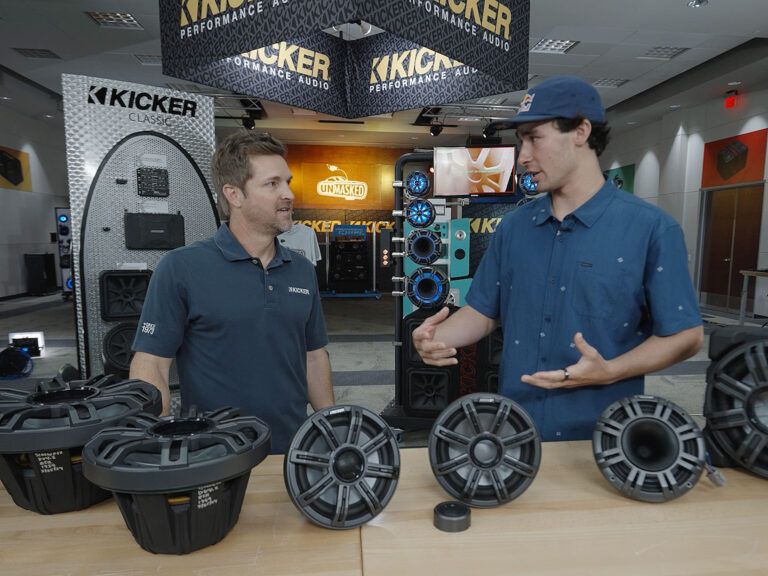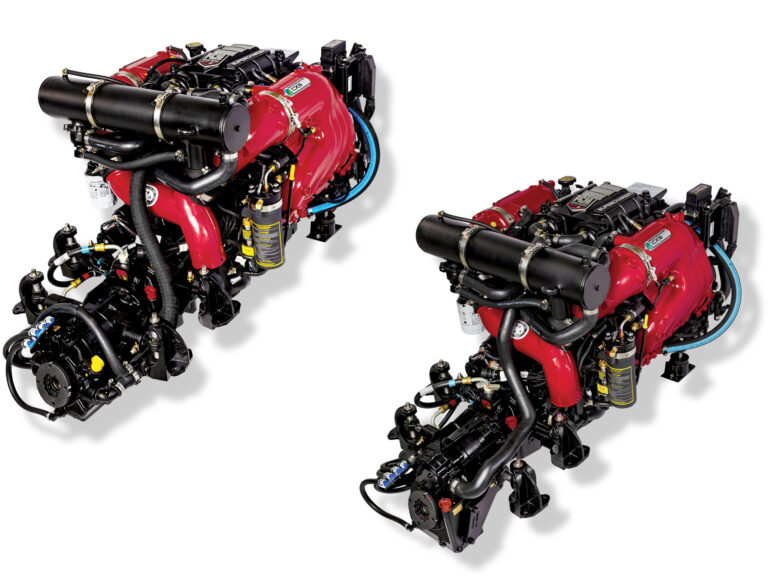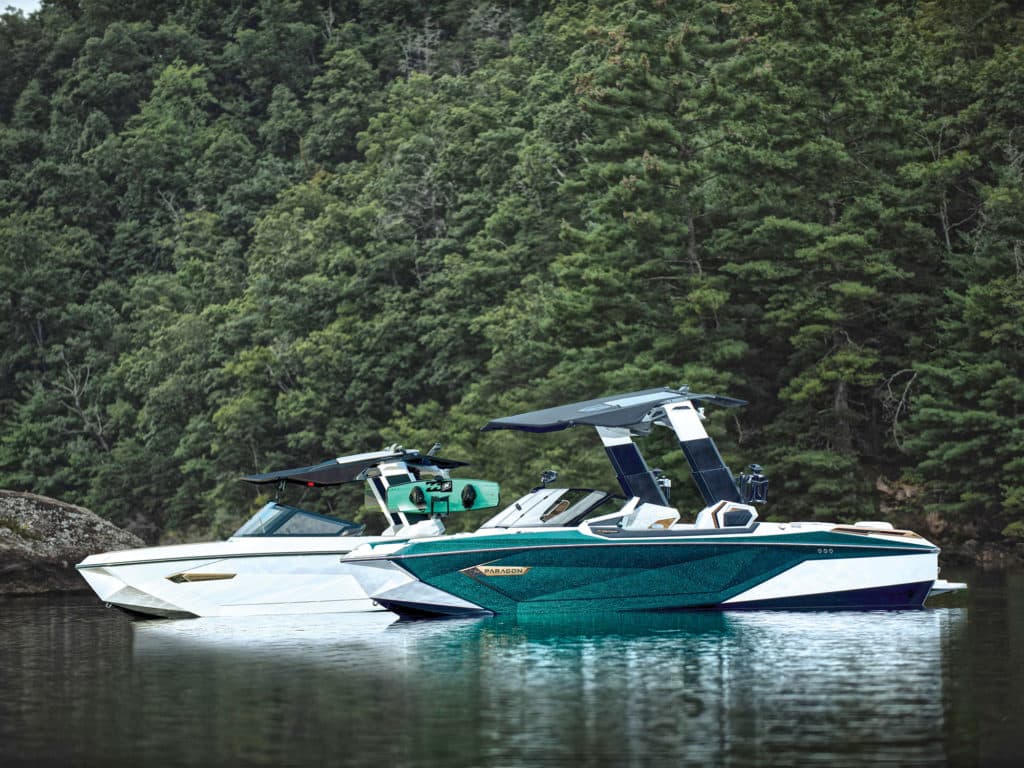
Tow towers have gone from wakeboarding one-offs to standard equipment on most tow-sports boats, as well as an increasing share of runabouts, deck boats and even pontoons. Chalk it up to the ability to provide an elevated tow point, store wake- and surfboards off the cockpit sole, and add just a touch of coolness factor. Here’s what to look for.
Drop Top
“Some people only lower their tower once a year,” says Darrick Wilson, chief of design at industry-giant Roswell. “But for someone who lowers their tower daily for a bridge or to get in a garage, folding is an important consideration.” Look for features designed to offset a tower’s weight, including compression spring systems, hydraulic or gas shocks, or electric-gear or worm-drive actuators. Release mechanisms vary, from bolts and pull pins to cam-style levers or even a simple push button.
Under Cover
Some Bimini tops are surprisingly small to integrate with a tower. Options with greater coverage make a world of difference in hot, sunny climates. Ask for a demonstration on how to handle the Bimini when folding the tower. Some can be quite cumbersome, while others prove easier. For example, the Bimini on the Roswell-designed telescoping Flight Control Tower, exclusive to Nautique, can remain fully in place when lowered and still shade the crew.
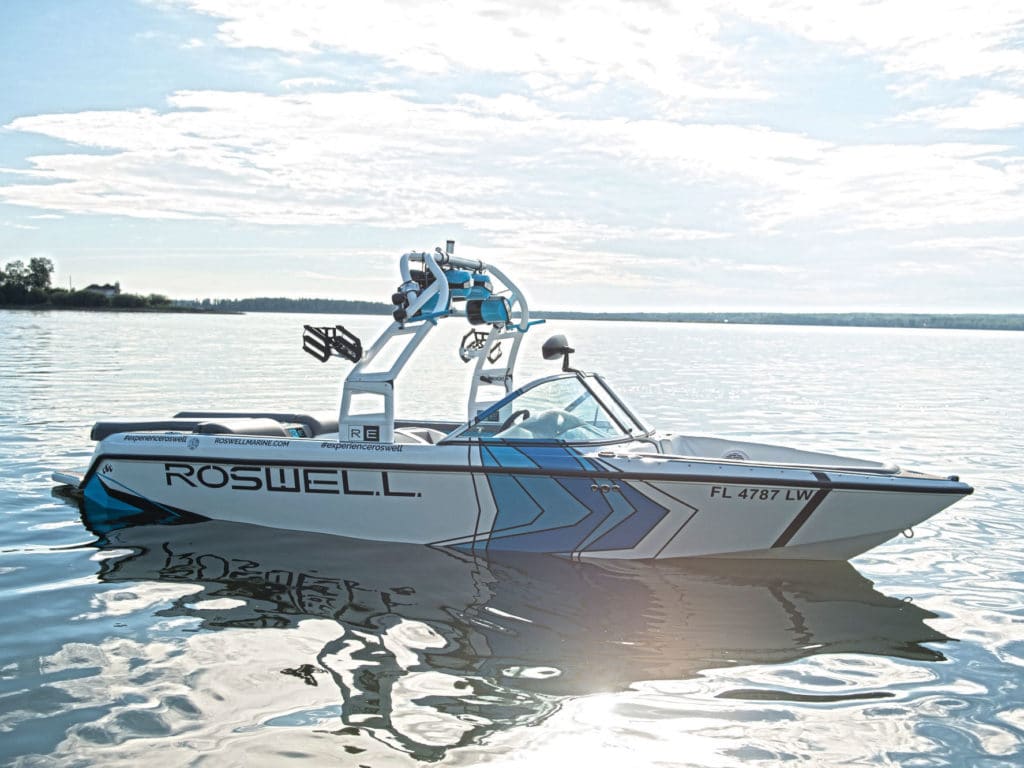
Built Strong
Aircraft-grade, 6061-T6 or 6063-T6 aluminum tubing in a minimum 1.9-inch diameter is still the industry standard for aftermarket towers, but OEM towers increasingly feature cast and billet aluminum. Anodizing gives the outer skin a corrosion-resistant finish and proves durable in salt water, as does powder-coating. Automotive-style paints have gained traction thanks to modern processing techniques that add a corrosion-resistant barrier to raw aluminum before priming and painting.
Bling Things
Look for integrated mounts and internal pre-wiring to accommodate items like board racks and speakers you might add later. These options are cleaner, possibly less expensive alternatives to clamps, adapters or snaking wire after the fact. Swiveling board racks make it easier to access boards from the cockpit. Clamp-style board racks are more secure and convenient than old-school bungees. Other options include side tow points for surfing, hooks to hang wet items, and sewn-in sleeves on the Bimini to accommodate surfboards. Wilson says, “Buyers can consider features that didn’t exist five years ago.”
Aftermarket Sizing
If adding an aftermarket tower, ensure it accommodates your boat’s beam width and that the tower feet fit your target mounting locations. Consider working with a tower manufacturer’s dealer network for installation; it’s trained to properly reinforce the areas where your tower will mount.
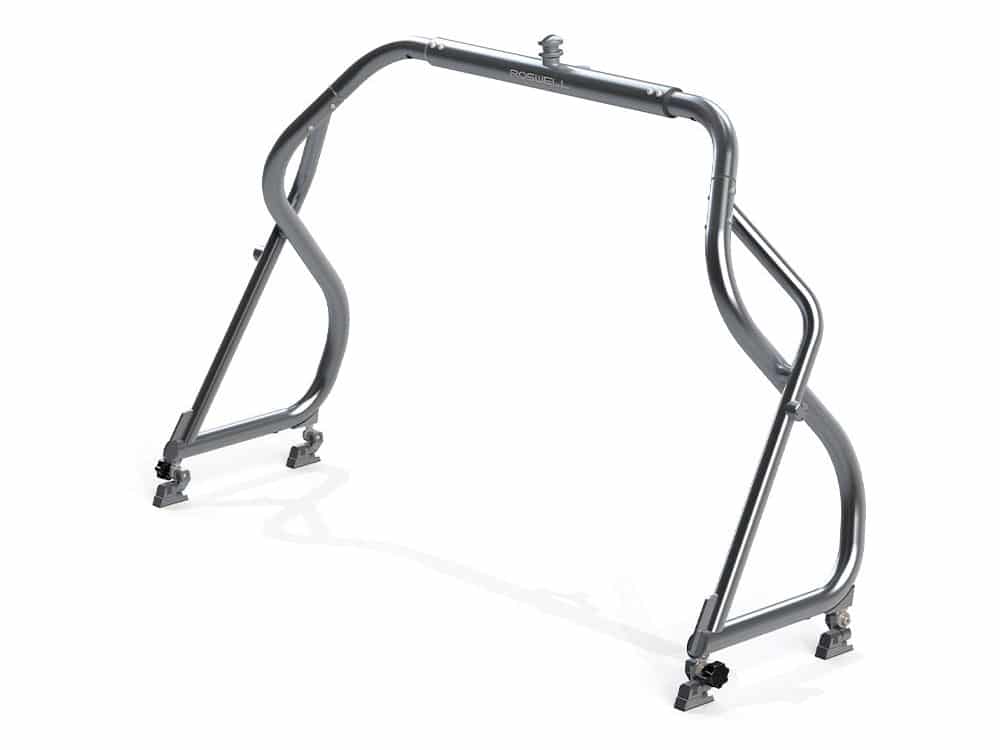
Roswell Area 53
Roswell’s Area 53 offers many of the same amenities featured on OEM towers, including a choice of high-quality, marine-friendly finishes, stainless-steel hardware, fixed board-rack mounts, wiring pull cables, and an option for a Bimini top. Anodized billet mounts accommodate top- or side-mounting locations, while stainless-steel ball joints allow the feet to conform to multiple deck styles. To learn more, visit roswellmarine.com.




